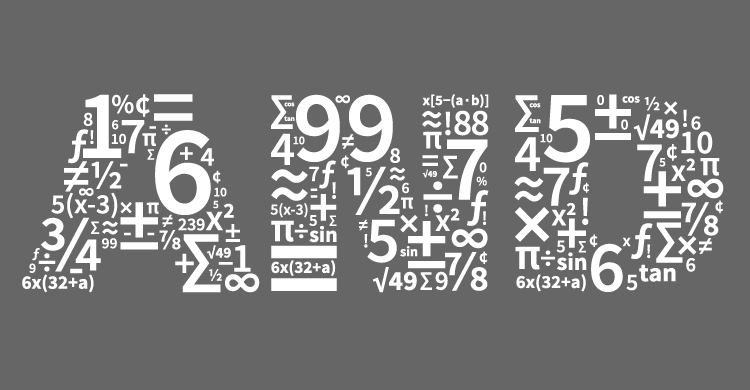I suppose this blog entry is not for everyone. Yet, it is time for me to write it.
It is about mathematics. Moreover it is about High School mathematics. More moreover, it is about a fundamental scope and sequence shift in the high school mathematics curriculum caused by the natural shift of state expectations for a college and career ready high school curriculum. Super moreover, it is about teaching an integrated high school college prep mathematics curriculum for all students!
If you are still interested at this point, then read on! Otherwise you might just want to wait for the next blog!
AGA or IMP?
It has been tradition in the United States, to teach the expected standards of the high school mathematics curriculum via courses named Algebra, Geometry and Advanced Algebra (or sometimes named Algebra 2). Often referenced as the AGA sequence of courses, there was an aura and perception that the AGA sequence of isolated topics resulted in a lack of rigor in student learning, with an inappropriate emphasis on low level procedural knowledge and fluency (or computational fluency and drill), using memorized algorithms for finding a “Math” problem answer (cross multiply and divide anyone?)
During the 1990’s (and a bit before) there was a niche middle school U.S. market referenced as Integrated Mathematics that had a few in-roads into high school math curricula, but not significant or widespread implementation success nationally. These programs were perceived to be better at increasing student conceptual understanding, but were often criticized for deserting computational fluency.
AGA was criticized as a curriculum that was a mile wide and an inch deep, with not much application or understanding. Integrated mathematics was criticized as a curriculum that was too deep, based on nice “Math” problems with not much connection to student proficiency on actual standards.
Of course neither extreme painting of these two seemingly opposite course pathways for the high school standards was completely accurate. There were many successful AGA and Integrated programs, and there were of course many non-successful examples as well. In reality much of the “success” of these programs – from a student learning point of view – were not so much about the scope and sequence of topics within the program per se, as much as it was about the teacher or teacher team using the program.
In pursuit of AND
I have always thought that either of these extremes was not best. Why couldn’t students benefit from a high school mathematics curriculum – a teaching and assessing program- that was both? Why not have fewer standards, taught at a deeper level of complex reasoning for student understanding, AND develop the essential procedural knowledge and skills needed to demonstrate student learning via the route of higher-level cognitive demand tasks (Thus redefining what is meant by mathematical fluency)?
This was the real gift to the high school mathematics standards offered up by the CCSSM. And the efforts made by states such as Texas and Virginia to intentionally blend conceptual understanding standards with procedural fluency standards AND allow the former to influence student learning of the latter via a set of mathematical practice and process standards.
The CCSSM Conceptual Categories of standards in high school created the potential for an integrated theme around:
- Number and Quantity
- Algebra
- Functions
- Geometry
- Statistics and Probability
- With Modeling
These big idea categories and the 138 or so corresponding standards were not designed to be about any course per se. They were designed to help the reader understand the nature of the Coherence (Sense –making), Rigor (a balanced approach to understanding, procedural fluency, complexity of reasoning and applications) and Focus (Fewer standards).
Just as Number and Quantity, Functions, and Modeling are not separate courses students take, neither should the Algebra standards, Geometry standards or Statistics standards be thought of as completely separate courses that isolate topics and standards within a given year.
We can call the courses students are to take in their first three years of high school mathematics whatever we want, but even if you chose to call it algebra – it has been forever changed for 2015 and beyond.
WHY?
First, we don’t really write mathematics textbooks anymore. We write mathematics content for which the textbook is just one format. Students and teachers can access the content online, on their ipad, or iphone or other web-sourced/app device, and they can “experience” the content in a more dynamic way via video resources, games, and other forms of digital intervention and formative support.
Second, the modern day high school Algebra 1 course and all high school courses are now more integrated, regardless of the course title. The 1st, 2nd, and 3rd year of high school mathematics a college and career ready student learns is now built on a foundation of progressions and themes within each course and across the three courses. So, which is better for high school students? An AGA sequence or an Integrated sequence? I am asked this question almost every week!
The answer is:
It is not the names of the high school courses that ultimately will impact student learning. It is not whether you call a high school math course Algebra 1 or Mathematics I. Geometry or Mathematics II. What matters above all else, are the quality, design and nature of your lessons and assessments every day.
And yet, there are some great benefits to teaching these high school standards within a scope and sequence that takes advantage of expanded ways of student thinking, if the content progressions are to adhere to certain rhythms for student learning. These choices though are not dependent on the claim of AGA or IMP. These scope and sequence integrated shifts should occur no matter what you choose to call your courses as student learning experiences are based on a natural progression of topics. As one example, consider the role of:
Functions: Notice that in this more modern day view of the high school curriculum, students do not write a linear equation, rather they build a linear function, an exponential function, a quadratic function, a logarithmic function, etc… Building functions, interpreting functions, and analyzing functions are a major aspect of the high school curriculum now – generated from within and by a modeling context. This work, from a standards progression point of view should be placed in advance of the equation solving aspect of the curriculum.
At the risk of getting just a bit specific in a blog entry, imagine a yearlong progression for the standard: I can build a function that models a relationship between two quantities.
This progression would begin with arithmetic sequences (constant rate of change) in Unit 2, move to linear functions (Unit 3) and then linear statistics (Unit 4), followed later by geometric sequences (constant percent rate of change) and more statistics in Unit 6, exponential functions (Unit 6 or 7) and eventually quadratic and polynomial functions (Units 9 and 10). Thus, the standard has a logical progression for student learning built within the course – across multiple conceptual categories.
Equations: A correct sequence to follow out of the building and interpreting of functions is to extend function development to include the topic of equations as the equivalence of two functions. This opens the door for students to solve linear, exponential, quadratic and other types of equations using three representations: Numerical (or table), visual (or graphical) and analytical (algebraic). What happens in your class, when students are asked to demonstrate fluency on a mathematical task such as:
Solve: x^2 + 2x = -3x -7
If students have first experienced standards on how to build and interpret linear and quadratic functions, then multiple solution pathways become available or a lower level cognitive demand task such as this. In an AGA course sequence this standard would be taught in the spring of ninth grade. In an Integrated course sequence this standard would occur sometime in the fall of tenth grade, but the progression for building functions, then equations would still hold true.
In this simple example, it is not about the course, as much as it is about your commitment to integrate student work with functions as a precursor to equation solving, and of course choosing a balance of higher and lower cognitive demand tasks in the process of building student fluency and understanding.
There are many more integrated topics and progression of standards to explore and discuss…, but not in this blog. However, one of the more elegant aspects of the geometry clusters is the use of transformations (functions) as one of three ways to explore, justify and reason within the geometry standards. Thus, functions play a deeply embedded role throughout all three years of high school mathematics.
For deeper insight I invite you examine our recently released high school mathematics series. We have also given the integrated question and series a lot of deep thought over the past 2.5 years as well. We hope this will help you in your high school standard mapping journey – whatever integrated path you might choose!
Re-posted, with permission, from Tim Kanold’s blog.
[author_bio id=”390″]






